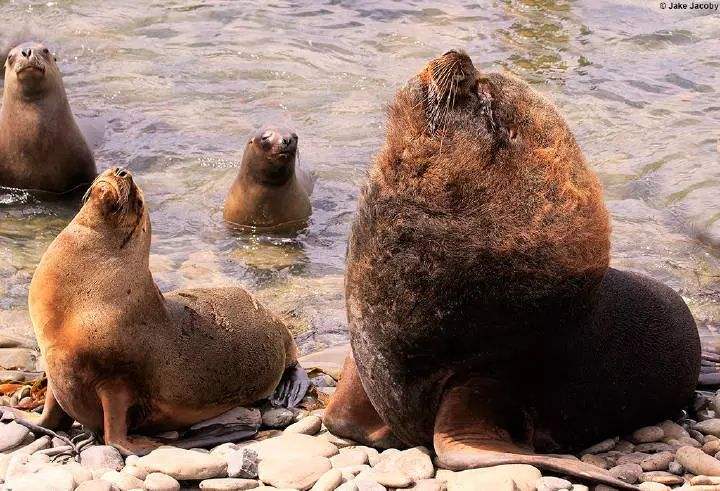Arctocephalus australis
IUCN
LCBasic Information
Scientific classification
- name:Arctocephalus australis
- Scientific Name:South American sea lion, southern sea lion, maned seal, South American fur seal
- Outline:Carnivora
- Family:Carnivora Pinnipedia Otariidae Arctocephalus
Vital signs
- length:Males are 2-2.5 meters long, and females are 2 meters long on average.
- Weight:Males weigh 200-350 kg; females weigh 140-150 kg
- lifetime:16-20 year
Feature
The most lion-like sea lion
Distribution and Habitat
South American sea lions are found along the coastline and on small islands along the coast of South America. From northern Peru to southern Brazil, the main distribution areas include Lobos Island in Uruguay, Valdes Peninsula in Argentina, the Beagle Channel and the Falkland Islands. South American sea lions prefer to breed on sandy beaches, but can also breed on gravel or pebble beaches. They are also found living on flat cliffs with tide pools.
Appearance
The mouth of the South American sea lion is short and blunt, wide, high, and upturned. The lower jaw is high and wide. The neck is wide. The mane is upright, long and thin, distributed on the front of the head, eyes, lower jaw, nape of the neck and chest; the head is very large and the mane is dense, making them the most lion-like of the sea lions; the body color of males ranges from dark brown to orange-yellow and even quite light dark gray. The pups are black on the back and dark orange on the belly, gradually turning brown in about a month.
South American sea lions eat many kinds of fish, including Argentine snow fish and anchovies. They also eat cephalopods, including squid and octopus. They also prey on penguins and South American fur sea lion pups. South American sea lions usually hunt in shallow waters within 5 miles of the coast. They forage for slow-moving prey on the seabed, but also prey that move in groups. When they catch prey, they shake it violently and tear it apart.
Details
There are about 14 species of sea lions in the world, of which the South American sea lion is the least known and the most bizarre. There are many new and interesting facts about South American sea lions, especially their "family marriage" life.

In the South American Sea Lion Palace, female South American sea lions generally will not leave and mess around after becoming the wives and concubines of the South American Sea Lion King. The owner will never allow them to find a "new love".
During the breeding season, breeding groups will be attacked, mainly because other adult males try to mate with females in the group. This attack makes the group chaotic and often separates mothers from their children. Males in a group are unable to defeat all attackers and retain all females in a territory. However, young intruder males usually fail to capture a female. Sometimes, an intruder will take a pup to try to control a female. In this case, the pup is often injured or killed.
South American sea lions are intelligent jugglers who are trained to perform with their trainers.
Listed in the 2016 Red List of Endangered Species of the World Conservation Union (IUCN) ver 3.1 - Least Concern (LC).








